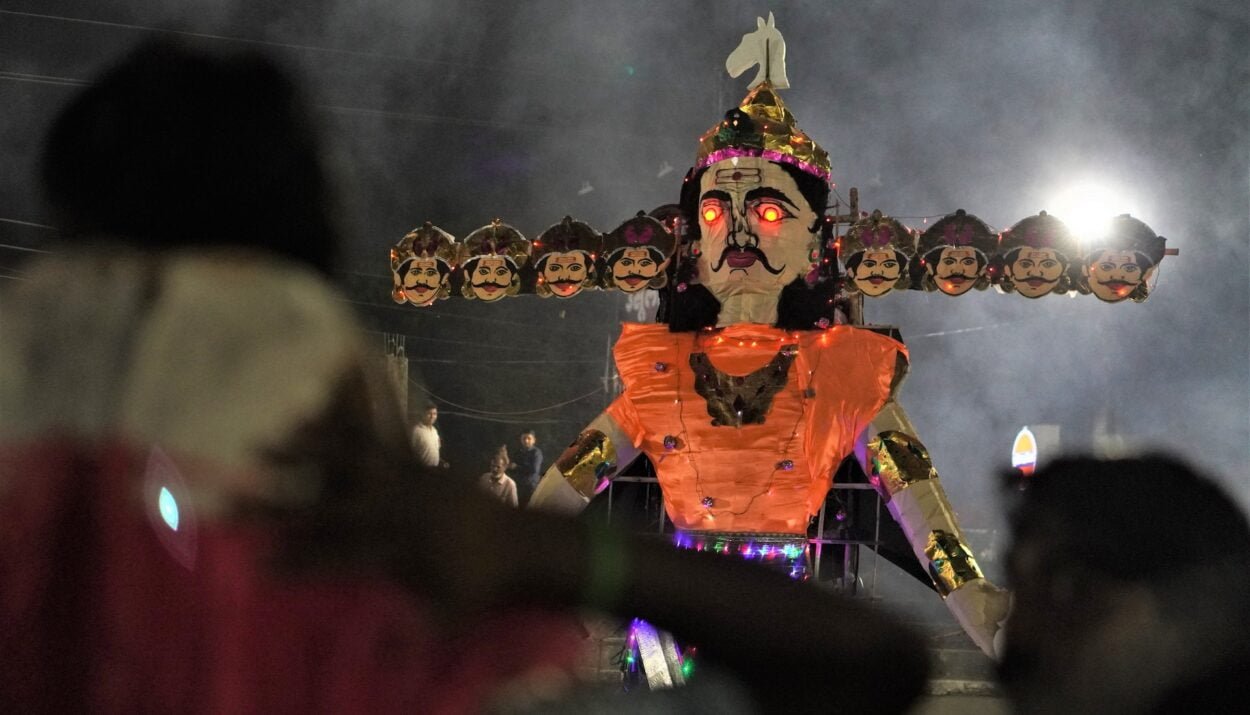Dussehra – India’s Festival of Victory, also known as Vijayadashami, is one of the most significant Hindu festivals celebrated in India. It marks the victory of good over evil and is observed with great enthusiasm and fervor across the country. The festival falls on the tenth day of the Hindu month of Ashwin, which usually falls in September or October.
The word ‘Dussehra’ is derived from the Sanskrit words ‘Dasha’ meaning ten and ‘Hara’ meaning defeat. It symbolizes the day when Lord Rama, the seventh avatar of Lord Vishnu, defeated the demon king Ravana and rescued his wife, Sita, from his captivity in the epic Ramayana.
The festival of Dussehra holds immense cultural and religious significance. It is celebrated in different ways in various parts of the country, but the essence remains the same – the triumph of good over evil.
In this article
Traditions and customs:
On the day of Dussehra, people perform various rituals and customs to commemorate the victory of Lord Rama. One of the main highlights of the festival is the burning of effigies of Ravana, his brother Kumbhakarna, and his son Meghnad. These effigies are filled with firecrackers and set ablaze, symbolizing the destruction of evil.
In some regions, people also reenact scenes from the Ramayana through dramatic performances called Ramleela. These performances depict the life of Lord Rama and culminate in the final battle between Rama and Ravana.
Another important tradition during Dussehra is the worship of Goddess Durga. In many parts of India, especially in the northern states, Dussehra marks the end of Navratri, a nine-night festival dedicated to the worship of the goddess. On this day, devotees offer prayers and seek blessings from the goddess.
Celebrations and Festivities:
Dussehra is celebrated with great pomp and show in different parts of the country. In North India, particularly in the states of Uttar Pradesh, Punjab, and Haryana, large fairs are organized where people gather to witness the burning of the effigies and enjoy various cultural performances.
In the southern states of India, like Karnataka, Andhra Pradesh, and Tamil Nadu, Dussehra is celebrated as Navaratri. It involves the worship of Goddess Durga and the performance of traditional dance forms like Garba and Dandiya.
One of the most famous Dussehra celebrations takes place in the city of Mysore in Karnataka. The Mysore Dasara is known for its grandeur and attracts tourists from all over the world. The city is beautifully decorated, and a grand procession featuring the idol of Goddess Chamundeshwari is taken out on the final day.
Dussehra is not just a festival; it holds a deeper meaning and conveys an important message. It reminds us that no matter how powerful evil may seem, it will always be defeated by the forces of good. It teaches us the values of righteousness, courage, and perseverance.
Moreover, Dussehra also signifies the change of seasons, as it falls at the end of the monsoon and the beginning of the harvest season. It is a time of joy and celebration, as people come together to rejoice in the victory of good over evil and to express gratitude for the bountiful harvest.
In Conclusion:
Dussehra or Vijayadashami is a festival that holds immense significance in the Hindu culture. It is a time to celebrate the triumph of good over evil, to reinforce our faith in righteousness, and to come together as a community. The traditions, customs, and festivities associated with Dussehra vary from region to region, but the underlying message remains the same – the victory of light over darkness.
Read more: Dussehra – India’s Festival of Victory: Traditions Unveiled